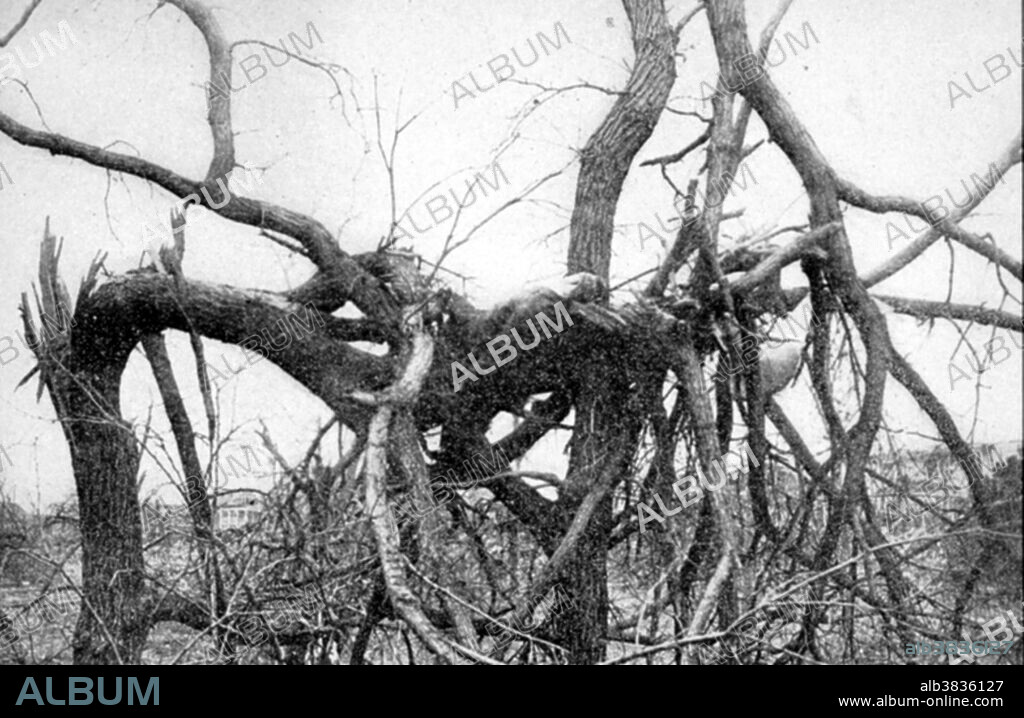alb3836127
Tornado Victim, 1913

|
Zu einem anderen Lightbox hinzufügen |
|
Zu einem anderen Lightbox hinzufügen |



Haben Sie bereits ein Konto? Anmelden
Sie haben kein Konto? Registrieren
Dieses Bild kaufen.
Nutzung auswählen:

Titel:
Tornado Victim, 1913
Untertitel:
Siehe automatische Übersetzung
A tornado victim at Omaha found in a tree. It is possible that this was a posed shot as the victim is relatively clean and there are no apparent tears in his clothes. Omaha, Nebraska, March 23, 1913. A tornado is a violent, dangerous, rotating column of air that is in contact with both the surface of the earth and a cumulonimbus cloud or, in rare cases, the base of a cumulus cloud. They are often referred to as a twister or a cyclone, although the word cyclone is used in meteorology in a wider sense, to name any closed low pressure circulation. Tornadoes come in many shapes and sizes, but are typically in the form of a visible condensation funnel, whose narrow end touches the earth and is often encircled by a cloud of debris and dust. Most tornadoes have wind speeds less than 110 miles per hour (177 km/h), are approximately 250 feet (80 m) across, and travel a few miles (several kilometers) before dissipating. The most extreme tornadoes can attain wind speeds of more than 300 mph (480 km/h), stretch more than two miles (3 km) across, and stay on the ground for dozens of miles (more than 100 km).
Bildnachweis:
Album / NOAA/Science Source
Freigaben (Releases):
Model: Nein - Eigentum: Nein
Rechtefragen?
Rechtefragen?
Bildgröße:
3900 x 2532 px | 28.3 MB
Druckgröße:
33.0 x 21.4 cm | 13.0 x 8.4 in (300 dpi)
Schlüsselwörter:
AMERIKANER • BESCHAEDIGUNG • BESCHÄDIGUNG • GEWALTTÄTIG • METEOROLOGIE • OPFER (GEWALT) • SCHADEN • SCHAUFEL • SPATEN • VERWUESTUNG • VERWÜSTUNG • WETTER • ZERSTOERUNG • ZERSTÖRUNG
 Pinterest
Pinterest Twitter
Twitter Facebook
Facebook Link kopieren
Link kopieren Email
Email
